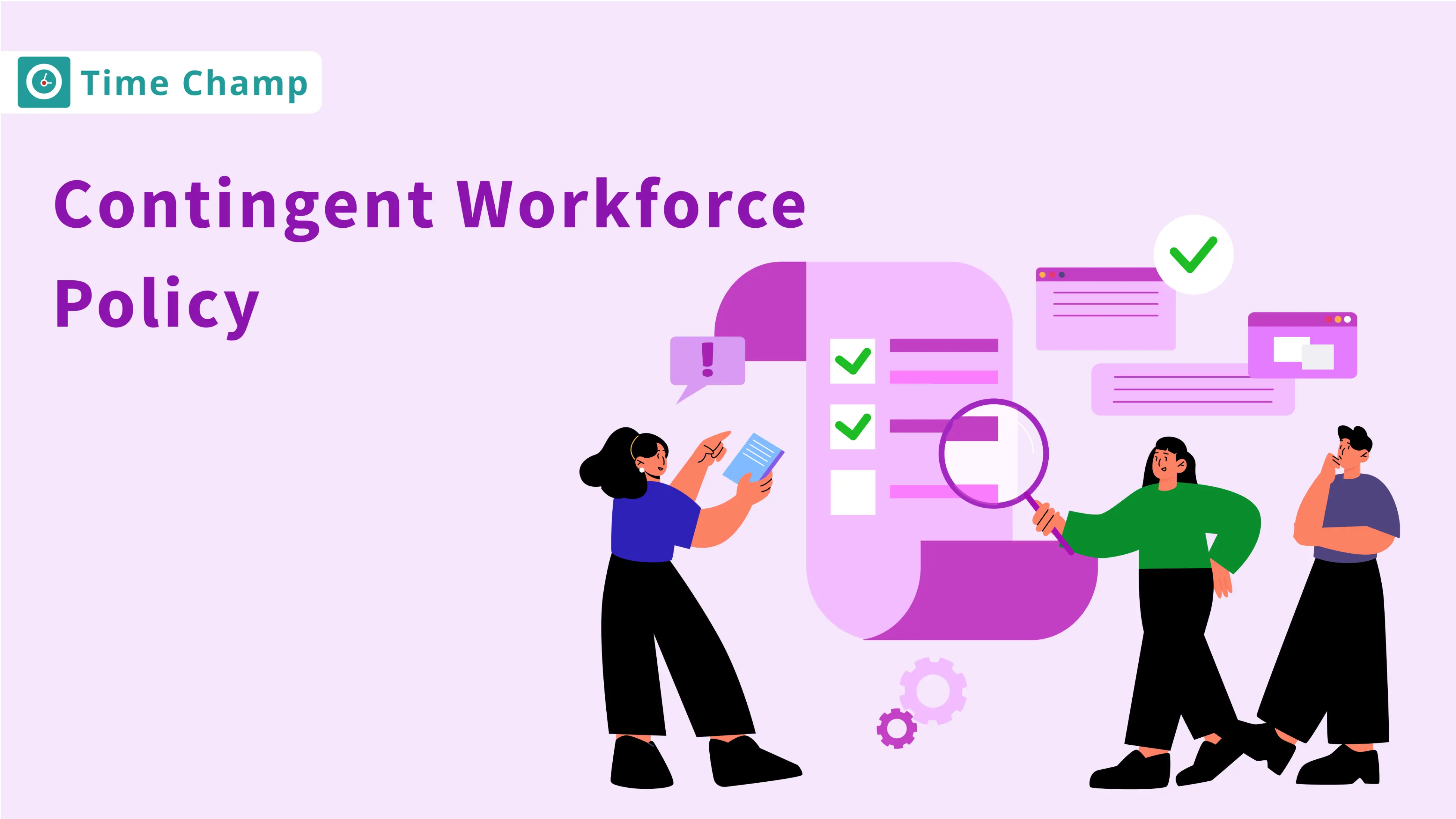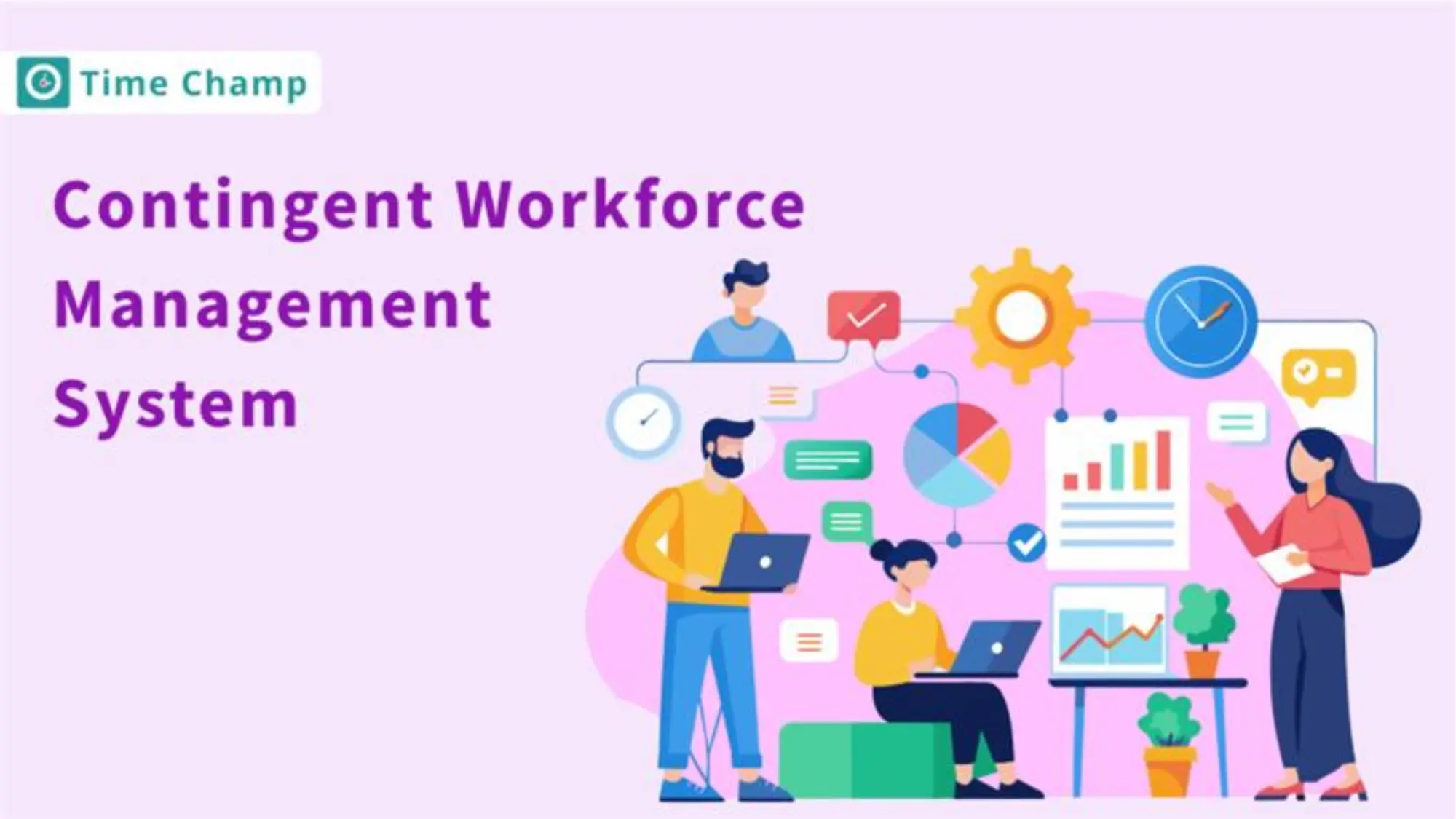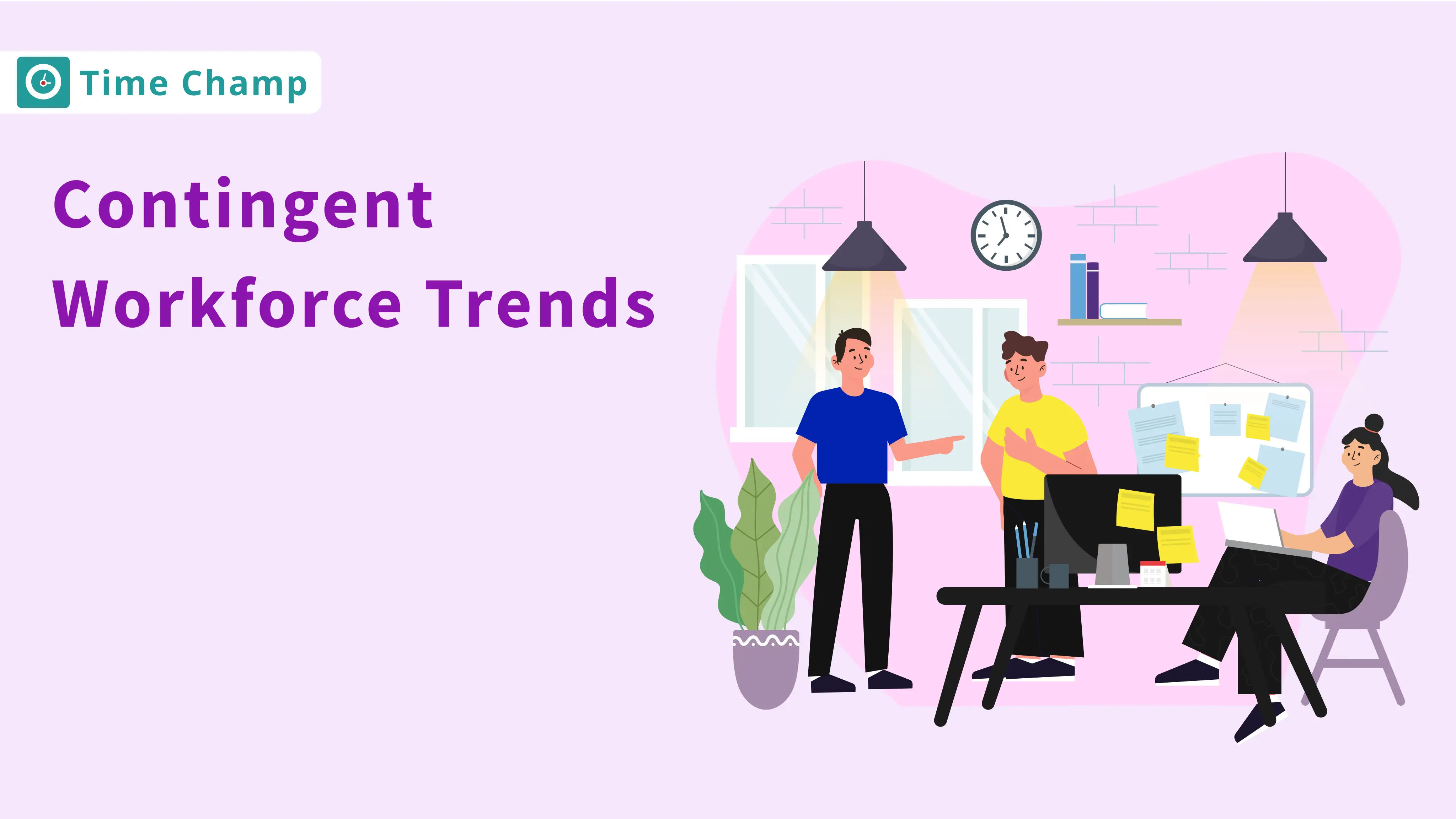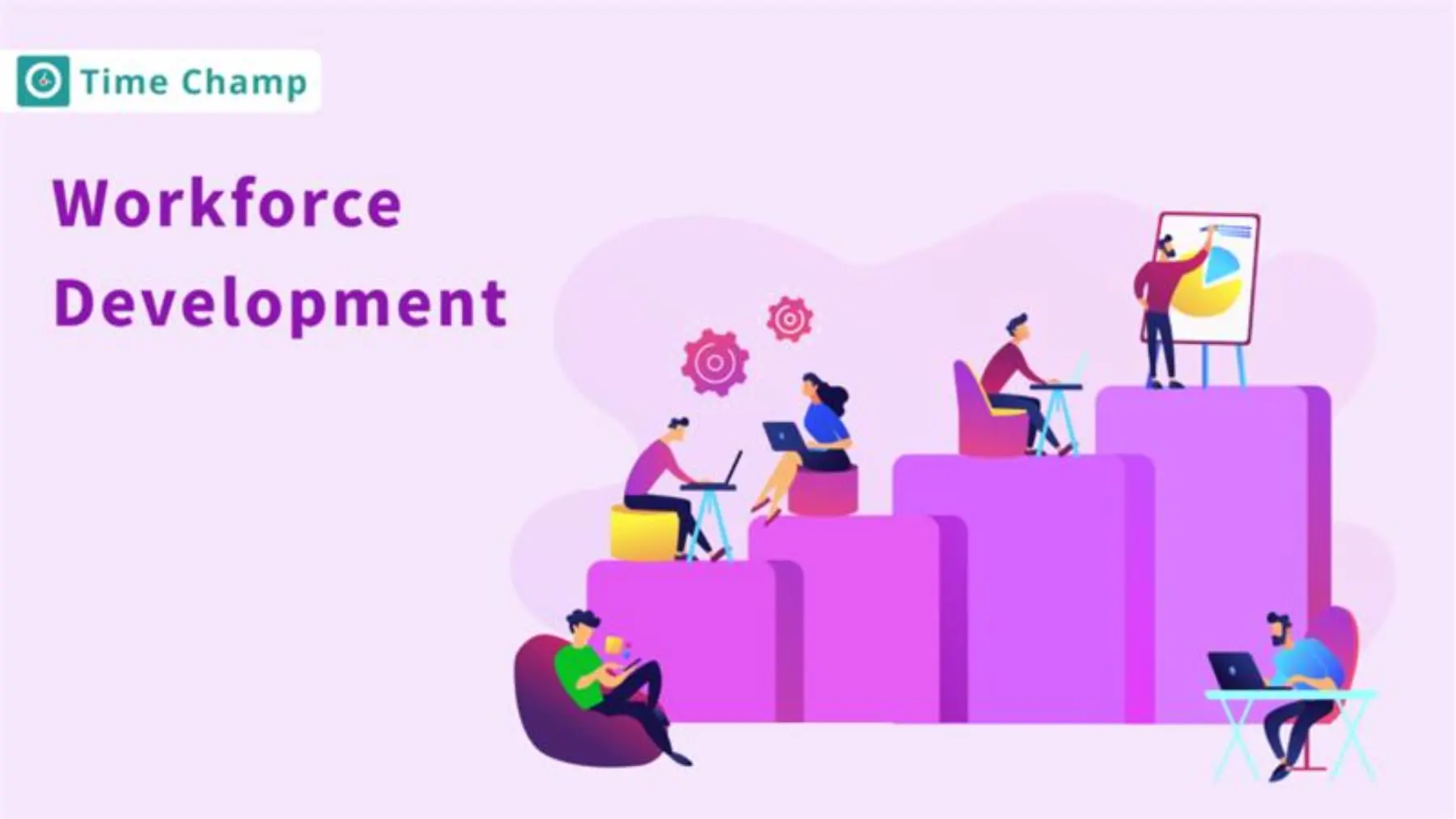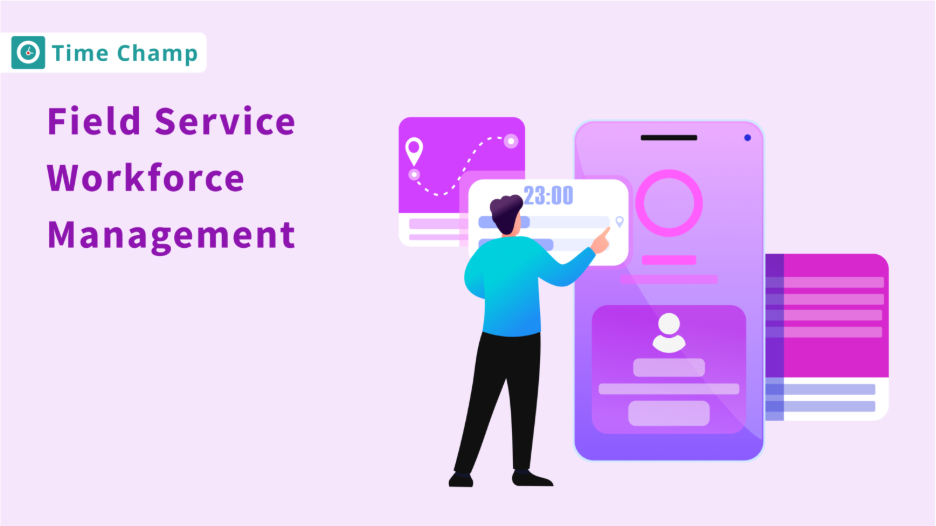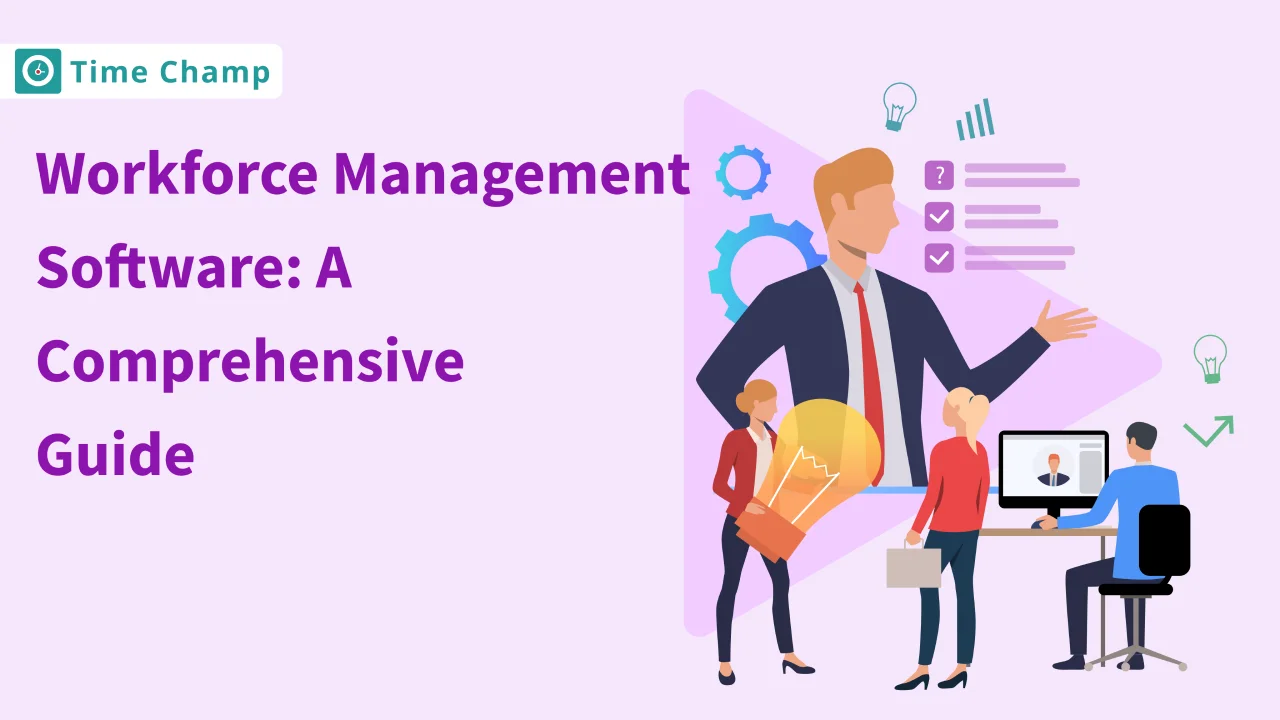Struggling to meet the deadlines when workloads suddenly increase without stressing your employees? The solution to this challenge is a well-structured contingent workforce policy. You can scale up your workforce, safeguard your business against threats, and maintain employee productivity by establishing clear processes, policies, and objectives in your team.
In this blog, you’ll learn how to establish an effective workforce policy, why it is important, and the steps to ensure compliance and efficiency in your team.
What is a Contingent Workforce Policy?
A contingent workforce policy is a clear guideline that guides how a business hires, manages, and involves temporary, freelance, or contract workers. It creates expectations and roles, compliance, and assists your organisation to remain productive, flexible, and goal-oriented.

A clear policy assists you in responding quickly to changing demands, maintains a seamless flow between full-time and contingent employees, reduces risks of compliance, and keeps projects on schedule.
Why Do Organisations Need a Contingent Workforce Policy?
Organisations need a contingent workforce policy to manage temporary, freelance, and contract workers effectively. Without this policy, businesses will be confused, experience compliance challenges, and result in uneven performance. A properly planned policy helps to create roles, responsibilities, and procedures that make integrating contingent workforces and permanent teams easier.
It is also useful in maintaining compliance, mitigating risks, and ensuring a smooth operation. More importantly, it provides you with the ability to expand and shrink your labour force according to demand without compromising productivity or employee satisfaction.
With the right policy in place, your organisation can also remain flexible, compliant, and well-equipped to deal with changing business requirements.
What are the 7 Steps to Create a Contingent Workforce Policy?

Developing an effective contingent workforce policy ensures that a business can handle temporary and contract workers well. Using these 7 steps, you will be able to create a policy that is flexible, compliant, and supports long-term development.
Step 1: Identify Workforce Requirements
Start with an analysis of the staffing requirements of your organisation. Assess the trends, such as project-based workloads, seasonal work demands, or skills shortages that need external support. Being clear about the need to have contingent workers will assist you in developing a policy that is practical and affordable.
Step 2: Establish Policy Ownership
Allocate a policy owner, the HR or the procurement department, or a cross-functional team. This promotes accountability, uniformity, and smooth coordination among organisational departments that handle contingent workforce management .
Step 3: Standardise Hiring and Onboarding
Simplify the process of hiring and onboarding. From contracts and background checks to fast training, a transparent process can assist the contingent workers to settle within a short time and begin to contribute without delays. This uniformity creates trust and makes employees feel valued.
Step 4: Ensure Legal and Regulatory Compliance
Protect your organisation by getting the compliance part right. Take care of issues related to workers classification, tax laws, and data security to avoid costly mistakes and have it all on board. Well-established compliance helps your business to stay safe and enables you to grow with confidence.
Step 5: Adopt Technology for Workforce Management
Monitor the contracts, compliance, and keep an eye on costs with the help of smart tools, such as workforce management platforms or vendor management systems. With the right technology, managing contingent workers becomes much easier.
Step 6: Define Performance Standards
Give contingent workers clear goals and expectations. Having check-ins and feedback periodically will help you know employee work progress and meet deadlines that add real value to your business. Well-defined performance standards ensure that both employees and managers are on track.
Step 7: Review and Optimise Continuously
Periodically review your contingent workforce policy and revise it based on feedback, dynamic workforce needs, and regulatory necessities. Make sure all processes are realistic, efficient and well understood throughout your organisation. This will ensure that your policy generates a steady outcome and promotes long-term business growth.
What Should be Included in the Contingent Workforce Policy?
A contingent workforce policy defines the expectations of the non-permanent workers. The following are the things to be included in the policy to make it clear, compliant, and easily managed.
1. Purpose and Scope
- Justify the reason why the policy was created and to whom it applies.
- Specify whether it includes freelancers, contractors, temporary workers or all non-permanent workers.
- This clarity ensures that all stakeholders understand the boundaries of the policy.
- An effective purpose statement puts expectations from the begining of the policy.
- It also ensures alignment between the company’s needs and worker contributions.
2. Definitions
- Have a clear definition of terms such as 'contingent worker' , 'temporary employee', and 'independent contractor'.
- This helps to avoid misunderstandings and makes sure that everyone recognises the differences between terms.
- Standard definitions enhance compliance and consistency in the law.
- These definitions also help you and your workers communicate more effectively.
3. Hiring Guidelines
- Outline how contingent workers are selected and onboarded.
- Add the requirements for contract, background, and approvals.
- Well-structured guidelines help to streamline the recruitment process and ensure consistency in hiring.
- With clear hiring guidelines, you can accelerate the process of allocating projects.
- They also ensure fairness and equal opportunity during selection.
4. Roles and Responsibilities
- Define the task of managers, HR, and contingent workers.
- Example: Managers control work placement, and HR ensures compliance with the legislation and contracts.
- Clear responsibilities prevent overlap, confusion, and accountability.
- This promotes teamwork and accountability across the departments.
- It also provides your employees with a clear picture of whom they should reach in case of an emergency.
5. Work Hours and Attendance
- Define working hours, reporting, and time-tracking policies .
- Add overtime, breaks, and leave policies where necessary. It helps you to plan better and provides fairness in the work distribution.
- Transparent scheduling promotes trust and allows efficient workforce planning.
- A strict and regular attendance policy helps to eliminate misuse of the flexible arrangement.
- They also encourage equal treatment of permanent staff and contingent staff.
6. Compensation and Benefits
- Provide clear schedules of payment, invoicing systems, and any applicable benefits.
- Mention how the tax responsibilities and reimbursements (if any) are handled.
- Clearly explained communication policies motivate employees to work.
- Punctuality in payments enhances loyalty and confidence between you and your employees.
- Clarity in benefits helps the employees to see what they should expect.
7. Performance Management
- Describe how performance will be monitored and evaluated.
- Add feedback and review procedures and conflict management. It creates a fair system for recognising contributions and addressing issues early.
- Regular performance management helps to identify training needs and ensures that expectations are met.
- Regular reviews provide strong points and opportunities.
- Open performance appraisal systems enhance motivation and productivity in teams.
8. Confidentiality and Data Security
- State expectations for handling sensitive information and company data.
- Add any exceptions to signing NDAs or restrictions on data privacy regulations. This protects businesses' intellectual property and the trust of clients.
- Well-developed confidentiality regulations protect the company property and keep the clients' trust.
- It minimises the possibility of data breaches and also assures clients that their information is handled responsibly and securely.
9. Compliance and Legal Requirements
- Ensure compliance with labour laws, tax regulations, and company rules.
- State the consequences when not complying for both the employees and the organisation. Compliance will prevent legal risks and reinforce the credibility of your company.
- Penalties and conflicts will be avoided by using compliance requirements.
- It also demonstrates ethical and professional business practices.
10. Termination Guidelines
- Specify the time of notice, reason for termination, and after-contract.
- Provide acceptable causes, including project incompletion, misconduct, or performance issues. This makes the closing of the contracts fair, transparent, and conflict-free.
- Procedural terminations minimise conflict and misunderstanding, as the employee is allowed to leave in a dignified manner.
- This process also helps to maintain positive relationships even after contracts end, which could lead to rehiring opportunities in the future.
11. Review and Update
- Provide a reason to review the policy periodically to ensure it is updated on legal and business changes.
- Get the feedback from managers and contingent workers to improve the clarity and effectiveness of the team.
- Review cycle makes the policy flexible so that it can expand with your organisational requirements.
- Employee feedback makes the policy practical, relevant, and supportive to business objectives as well as the needs of the employees.
Need a Tool to Manage Your Contingent Workforce Efficiently?
Managing a contingent workforce can be a difficult task, particularly in terms of monitoring the working hours, project status, and attendance of diverse teams. Utilise tools such as Time Champ to address these issues. Time Champ is a smart time tracking and workforce management system that assists in facilitating operations, minimizing administrative loads, and boosting productivity.
You can track work hours accurately, improve employee accountability , support remote and hybrid teams, and simplify reporting by using Time Champ.
Conclusion
A well-organised contingent workforce policy is a powerful strategy that keeps your business flexible, compliant, and productive. With the development and regular review of these clear policies, you will be able to integrate contingent workers, reduce risks, and ensure long-term growth. This policy is the key to balancing business agility, long-term stability, and growth.
Frequently Asked Questions
A contingent labour policy focuses on managing the temporary, freelance, or contract workers, while an HR policy mainly addresses permanent employees. It ensures both types of workers are managed fairly but under the right rules.
This policy is most advantageous to industries such as IT, healthcare, manufacturing, retail, and seasonal businesses because they usually require short-term talent to deal with workload peaks. These policies help you quickly adapt to demand without over-hiring permanent staff.
Yes, this policy can be helpful even to small enterprises. An effective policy makes you remain compliant, prevents conflicts, and rapidly scales resources without confusion. It also develops professionalism, which makes your small businesses more attractive to talented freelancers.
The lack of a policy imposes compliance risks and misclassification, uneven performance, or poor relationships with contingent workers. These risks can lead to financial losses and damage the company’s reputation.
Yes, technology helps you in simplifying the onboarding process, performance tracking, compliance, and real-time insights that make the contingent workforce more efficient and reliable. Here, you can use tools like Time Champ to create an effective contingent workforce policy.

